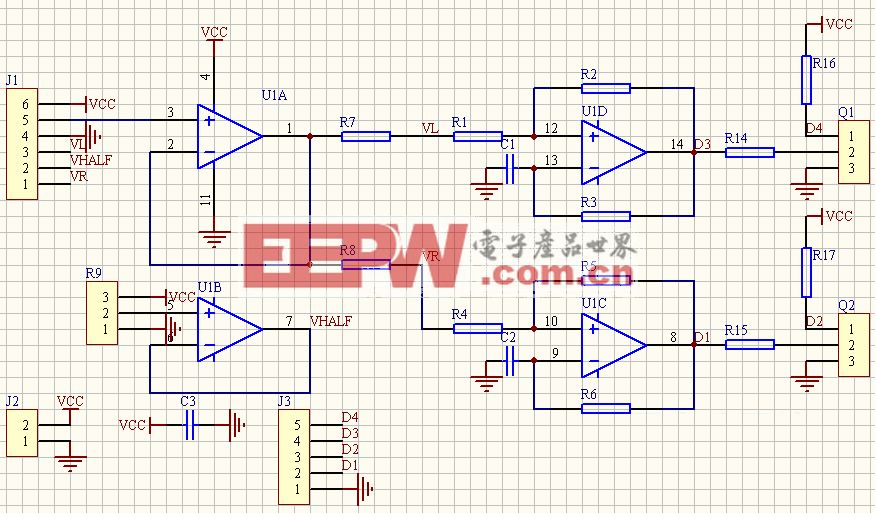建立一個電荷泵的超低靜態(tài)電流(靜態(tài))-Build
Portable, battery-powered devices often spend most of their life in standby mode, where the quiescent current of an internal boost converter bleeds the battery continuously. The quiescent current during standby can be larger than the actual load current. Though several inductor-based converters offer amazingly low quiescent current (10uA maximum), a regulated charge pump is preferred (or required) for cost-sensitive designs that must be intrinsically safe.
Off-the-shelf regulated charge pumps with output-current capabilities ≥10mA have typical minimum quiescent currents of 50 to 100μA. If that level of quiescent current is not acceptable, you can reduce the overall average by adding circuitry that monitors the regulated voltage remotely and toggles the charge pump in and out of shutdown. That approach, however, may not achieve the desirable Iq level (10μA). The advent of low-RON analog switches and ultra-low-current comparators and references makes possible a discrete-component charge pump whose maximum quiescent current is about 7μA.
Charge pumps use an ac-coupling technique to transfer energy from a transfer capacitor to a storage capacitor. The transfer capacitor is first charged via analog switches to the level of VBATT, then other analog switches transfer the energy to a storage capacitor tied to VOUT. The transfer capacitor is then charged again and the cycle repeats. With ideal analog switches exhibiting zero loss, the VOUT level equals 2VBATT. As expected, however, the analog switches' finite RON produces an output level that drops in proportion to the load current.
A basic regulated charge pump (Figure 1) includes an oscillator, several analog switches, a voltage reference, and a comparator. The comparator serves as a voltage monitor and oscillator. When the circuit is in regulation the comparator output is low, which closes the NC switches and allows C1 to charge to VBATT. When the voltage at VOUT dips below the output-regulation threshold (3.3V in this case), the comparator output goes high. The NO switches close, transferring C1's charge to C2. This cycle repeats until VOUT regains regulation.

Figure 1. Low-Iq regulated charge pump.
Resistors R3-R5 form the hysteresis necessary for oscillation. Their value (1.0MΩ) creates a notable level of hysteresis while minimizing VBATT loading. As the comparator output changes state, feedback resistor R5 creates hysteresis by moving the threshold applied to the comparator's IN+ input. For the resistor values shown, reference value nominal for IC1 (1.182V), and VBATT = 3.0V, the VIN+ threshold swings between approximate values of VIN+low = 0.39V and VIN+high = 1.39V.
When the circuit is in regulation, VIN- slightly exceeds VIN+, the comparator output is low, the voltage at VOUT is sensed by the R1/R2 divider, and the threshold at VIN+ is low (0.39V). With VIN+ at 0.39V, the R1 and R2 values can be calculated from the following equation:
VIN+ = VOUT(R2/(R1+ R2)).
The magnitude of R1+R2 should be greater than 1MΩ to minimize VBATT loading. If VOUT = 3.3V and R2 is selected at 2.2MΩ, R1 is calculated at 301kΩ. Capacitor C3 connects to the comparator's IN- input. Along with R1 and R2, C3 sets the oscillation frequency according to the following simplified relationships:
tdischarge = tlow = -R2*C3*ln(VIN+low/VIN+high).
tcharge = thigh = -R2*C3*ln(1 -((VIN+high -VIN+low)/(VBATT -Vin+low)).
fosc = 1/tperiod, where tperiod = tlow + thigh.
To maximize efficiency and reduce the effects of comparator slew rate, you should set a relatively low frequency. Choosing C3 = 470pF yields the following:
tlow = 178μsec and thigh = 68μsec; thus fosc = 4.0kHz.
The values of C1 and C2 are selected to achieve the desired load current and ripple. For this application (Iload = 10mA), choose C1 = 10μF. To calculate the value of C2, make an approximation based on the desired ripple voltage:
C2 = (Iload * tlow)/Vripple.
With Iload = 10mA and Vripple = 150mV, C2 = 12μF.
With the component values shown, the circuit draws a maximum Iq of 6.9μA and offers a considerable improvement over off-the-shelf charge pumps. You can further lower the Iq value by increasing the resistor values, but that effect is minimal because IC2's quiescent current (3.8μA maximum) dominates the total. This circuit lets you implement an ultra-low-Iq regulated charge pump. Until off-the-shelf options are available, it provides an alternative for designers seeking to implement a low-cost design without the use of inductors.
This design idea appeared in the August 5, 2004 issue of EDN magazine.








評論